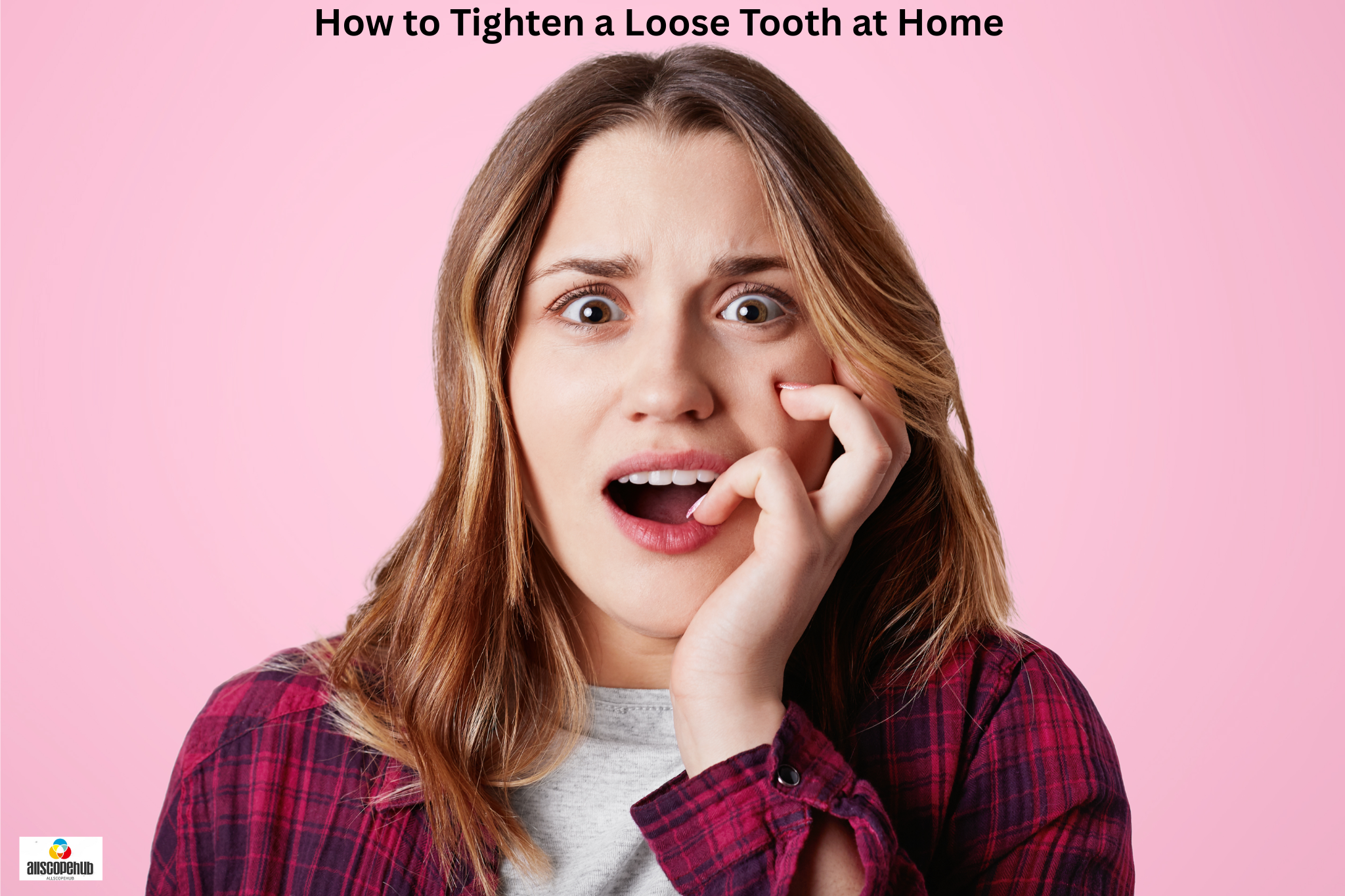Feel That Wiggle? You’re Not Alone
We get it. That strange wiggle in your tooth can throw you into full-on panic mode. Maybe you were brushing, chewing, or just touching your tooth with your tongue when you noticed it felt… loose. It’s unsettling—and honestly, a little scary. But here’s the truth: you’re not alone in this, and you do have options.
If you’re here searching for how to tighten a loose tooth at home, you’re probably hoping for honest advice, real solutions, and steps you can try without rushing to a dentist. The good news? You’re in the right place. We’re not here to throw confusing jargon at you. This is a straightforward guide, written like a conversation with a friend who knows a thing or two about oral health. Let’s walk through it together.
Start Here: Safe Steps You Can Try at Home
First things first: don’t panic, and don’t poke or wiggle that tooth more. If the cause of the looseness is minor—like irritation from food or brushing too hard—there are ways to stabilize it with care.
What You Can Do Right Now:
- Rinse with salt water: Mix a teaspoon of salt in warm water and rinse gently twice a day. It helps reduce inflammation and bacteria buildup.
- Switch to soft foods: Stick to soups, yogurts, smoothies, and cooked vegetables. Hard or sticky foods add pressure that can make things worse.
- Please don’t touch it: As tempting as it is to wiggle the tooth, avoid it altogether. Movement delays healing.
- Use a soft-bristle brush: Brush gently, especially near the gum line, to avoid irritating the area further.
- Clove oil: Dab a little on a cotton swab and apply around the loose tooth. It acts as a natural anti-inflammatory.
These aren’t magic fixes, but they give your mouth the gentle rest it needs to recover.
Try These Natural Remedies to Support Your Healing
While nothing beats professional dental care, some natural solutions may help stabilize a mildly loose tooth.
Saltwater Rinses
It’s one of the simplest home remedies. Salt reduces harmful bacteria, calms swelling, and gives your gums a chance to heal.
Clove Oil
Used for centuries in dentistry, clove oil can numb discomfort and reduce inflammation. Just be careful not to overdo it—too much can irritate.
Turmeric + Black Pepper Paste
A pinch of turmeric and black pepper with a few drops of water makes a potent anti-inflammatory mix. Apply to gums, leave for a few minutes, then rinse.
Amla (Indian Gooseberry)
Chewing a small piece or using amla powder in a rinse may strengthen gums and improve tissue repair due to its high vitamin C content.
These remedies won’t “fix” a tooth that’s loose from severe damage—but they can support healing in less severe cases.
Can a Loose Tooth Tighten Back on Its Own?
You might be asking yourself: “Can this get better on its own?” Sometimes, yes.
If your tooth become loose from trauma (say, biting something hard or brushing too roughly), it might reattach slightly with rest and better care. But if it’s caused by gum disease or bone loss, professional treatment is a must.
According to the Mayo Clinic, gum disease is one of the main culprits behind loose teeth in adults. It’s a bacterial infection that damages the gums and the bone holding your teeth. Early stages might only cause bleeding gums, but if it’s not treated, it can lead to tooth loss.
What’s Causing the Loose Tooth in the First Place?
Understanding the cause is step one in knowing what action to take. Here are the most common reasons:
- Gum disease (periodontitis): Long-term infection causes gums to pull away from teeth.
- Bruxism (grinding): Nighttime grinding weakens the ligament holding your tooth.
- Injury: Even a mild knock to your face or jaw can loosen a tooth.
- Hormonal changes: Pregnancy, menopause, and puberty can make gums more sensitive.
- Poor oral hygiene: Plaque buildup turns into tartar and pushes gums back.
- Nutritional deficiency: Lacking calcium or vitamin D makes bones and teeth more vulnerable.
Knowing the “why” helps you take the right “how” steps.
The Best Foods to Help Strengthen Loose Teeth
Your diet affects your gum and bone health more than you might think.
Eat More Of:
- Leafy greens (kale, spinach): Full of calcium and folate.
- Fatty fish (salmon, sardines): Packed with Vitamin D and omega‑3s.
- Nuts and seeds: Great for magnesium and healthy fats.
- Dairy (cheese, yogurt): Helps remineralize enamel and strengthen jawbone.
Avoid:
- Sticky sweets (like caramel)
- Hard candy or ice
- Sugary sodas
- Acidic fruits (if not followed by rinsing)
Switch to a soft, healing food plan for a few days—it takes the pressure off and gives your mouth space to rest.
How to Prevent Future Tooth Loosening
Once your tooth starts to feel stable, don’t just go back to business as usual. Here’s how to keep that from happening again:
- Brush twice a day—gently
- Floss every night, even if you’re tired
- Rinse after meals with water or mouthwash
- Don’t use your teeth as tools (opening bottles or bags)
- Wear a nightguard if you grind at night
- Visit your dentist regularly—even if you don’t have pain
Consistency is key. Dental issues often creep up slowly—and prevention is so much easier than repair.
When You Should See a Dentist
Let’s be real—not all loose teeth are fixable at home. If you notice:
- Bleeding gums
- Swelling around the tooth
- Pain when chewing
- Pus or bad breath that won’t go away
… it’s time to book that appointment.
One standard procedure dentists use is scaling and root planing, a deep-cleaning method that removes tartar from below the gum line. It’s often the first line of defense against gum disease. You can read more about it from the American Dental Association.
Early treatment can often save a tooth that seems like a lost cause.
You’re Not Powerless—And You’re Not Alone
Let’s be honest—dealing with a loose tooth as an adult isn’t just frustrating. It can feel embarrassing and stressful, too. But the truth is, this happens more than you think—and with the proper care, you can protect your smile.
If you’re still wondering about how to tighten a loose tooth at home, here’s your takeaway: Start with gentle care. Stay consistent with hygiene. Adjust your diet. And don’t hesitate to bring in a professional if things don’t improve.
Let’s Keep That Smile Strong Together
We’re here to help you feel confident and informed—not just today, but for the long run. Whether you’re trying home remedies, upgrading your oral care routine, or just want peace of mind, you’re making a smart move by paying attention now.
Want a printable checklist of healing tips and tooth-friendly foods? Let us know. We’d be happy to help you stay on track with your oral health goals. Your smile is worth protecting—one step at a time.



